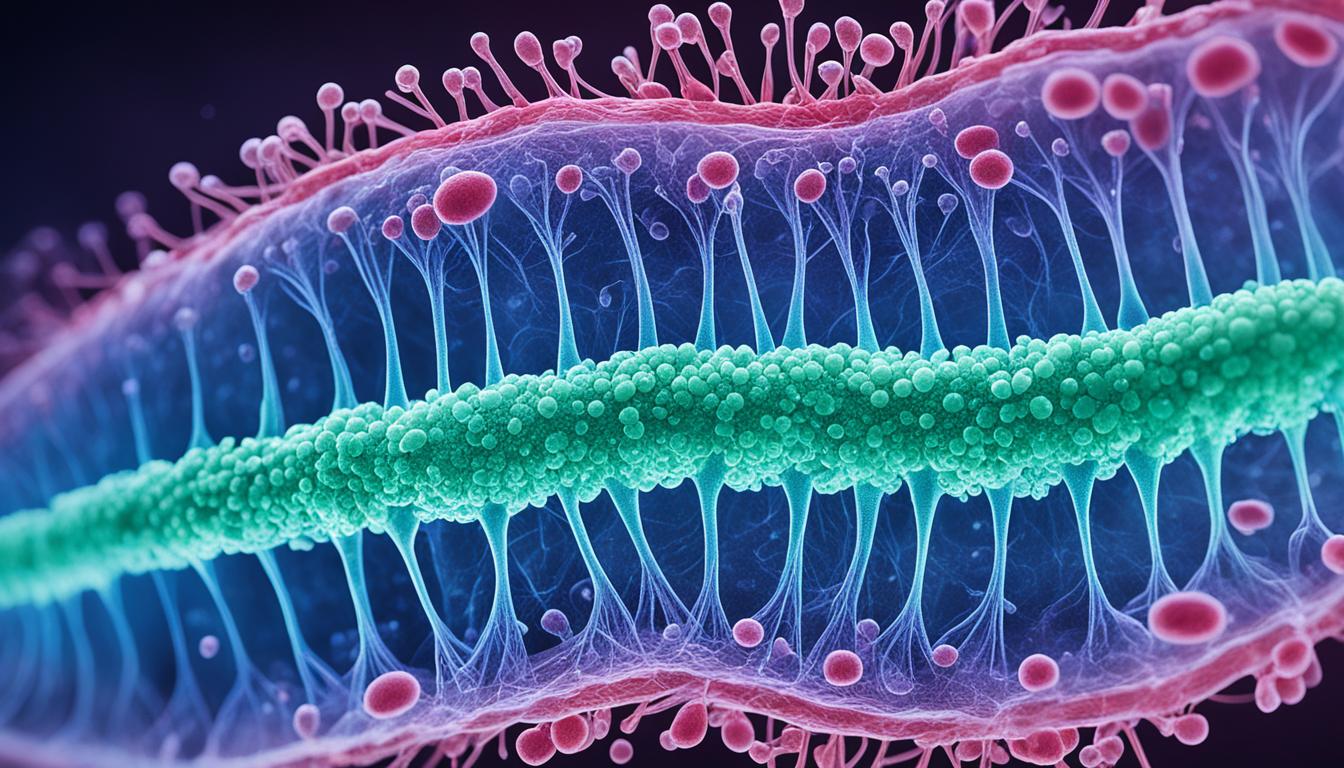Rectal ulcer disease, known as solitary rectal ulcer syndrome, is rare. It brings discomfort and distress. Symptoms include painful bowel movements, rectal bleeding, and mucus in the stool. These happen because of too much straining when going to the bathroom. It can harm the rectal lining. Things like rectal prolapse, long-term constipation, and having dry, hard stools can also play a part.
It’s key to spot the symptoms of this disease early. This helps with fast treatment. Common signs are constipation, rectal bleeding, and mucus in the stool. You might also feel pain or have trouble when you go to the bathroom. Sometimes, your bowel movements feel incomplete. You might have pain in your stomach or pelvic area too.
Doctors find out if you have this disease by looking at your medical past and doing a physical exam. They also use special tests. One common test is an anorectal endoscopy. Here, a camera on a thin tube looks inside your rectum. The doctor can also take samples of the tissue for more tests. An ultrasound of your stomach area might happen. This helps rule out other sicknesses with the same symptoms.
How they treat rectal ulcer disease changes based on how bad the symptoms are. For mild cases, changing your diet and how you go to the bathroom can help. You might also try some medicines. These could be creams, enemas, or even botox injections to the rectum. If it’s really bad, surgery might be needed. This could include removing part of or the whole rectum.
Stem cell therapy is a new treatment idea for this disease. It uses stem cells to repair the damage in the rectum. This way, the tissue can heal. Even though this idea is still being studied, it gives hope. It might be a new way to help people with rectal ulcer disease.
Key Takeaways:
- Rectal ulcer disease, or solitary rectal ulcer syndrome, is a rare disorder characterized by uncomfortable bowel movements, rectal bleeding, and mucus in the stool.
- Repetitive straining during defecation is the primary cause of rectal ulcer disease, leading to mucosal damage in the rectum.
- Symptoms of rectal ulcer disease include constipation, rectal bleeding, mucus in the stool, pain during bowel movements, incomplete bowel movements, and pelvic and abdominal pain.
- Diagnosis often involves anorectal endoscopy and abdominal ultrasound to visualize the rectal lining, take tissue samples, and rule out other conditions.
- Treatment options range from dietary changes and medications to surgical interventions, depending on the severity of symptoms.
- Stem cell therapy shows promise as a potential treatment for rectal ulcer disease, offering the possibility of tissue repair and healing.
Causes and Diagnosis of Rectal Ulcer Disease
Rectal ulcer disease is mainly caused by frequent straining during bowel movements. This happens when the anal sphincter is too active. It can increase pressure in the abdomen and rectum, hurting the mucosa. Other things that can lead to this are rectal prolapse, ongoing constipation, and passing dry, hard stools.
Diagnosis depends on clinical signs and anorectal endoscopy. The doctor inserts a thin tube with a camera into your rectum for a close look. They might take a small piece of tissue to check it for ulcer signs. An abdominal ultrasound is also done to make sure it’s not something else causing your symptoms.
Diagnosis Process
- Patient history and physical examination
- Anorectal endoscopy to visualize the rectal lining
- Tissue sampling for biopsy
- Abdominal ultrasound for differential diagnosis
| Possible Causes of Rectal Ulcer Disease |
|---|
| Repeated straining during bowel movements |
| Overactive anal sphincter |
| Rectal prolapse |
| Chronic constipation |
| Dry, hard stools |
Treatment and Stem Cell Therapy for Rectal Ulcer Disease
How we treat rectal ulcer disease depends on how serious the symptoms are. For milder cases, changing what you eat, like adding more fiber, can help. This eases constipation and helps you have regular bowel movements. You might also try behavioral defecation therapy. This teaches people to relax their pelvic muscles when they need to go.
If diet changes and behavior therapy aren’t enough, medicine may help. Common treatments include using creams, enemas, and injections. These aim to reduce swelling, relieve pain, and help the rectal area to heal.
In severe cases, surgery might be the best option. For people with rectal prolapse, a surgery called rectal mucosal resection can be done. But if nothing else works, they might need a proctectomy. This is when the rectum is removed, and it’s usually a last-ditch effort.
Stem cell therapy is also showing promise for rectal ulcer disease. Stem cells might help fix the damaged rectal tissue. But we still need more studies to know for sure if this treatment is safe and effective. For now, it’s a glimpse of hope for those with rectal ulcer disease, offering a possible new way to improve their lives.

